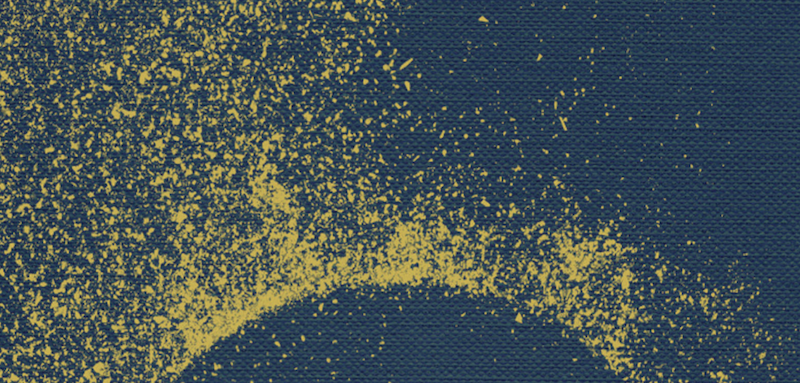Topics:
Search for topics or resources
Enter your search below and hit enter or click the search icon.

That we live in a time of uncertainty and unique challenge is at this point widely accepted, I think. Call it the “negative age” if you like, or an ecclesial winter, or, better still in my view, a “gray zone.” The gray zone is a concept from the Australian pastor Mark Sayers and he discusses it at length in his new book A Non-Anxious Presence.
I’m going to blog my way through the book, as I think it’s one of the best treatments I’ve seen of our cultural moment. Most importantly, I think Sayers has articulated a way forward that is actually a way forward: not cultural capitulation to the left, not the reactionaryism of the right, nor the continued attempts to pretend that it’s still 2005 that you see from the centrist types. Sayers approach is identified by his title: a non-anxious presence, which is a concept he’s developing from the work of Edwin Friedman.
The claim, in short, is that we are living in a transition moment historically, which Sayers calls a gray zone. The idea of a gray zone is that while we can clearly see that one era is ending, we don’t yet have sufficient clarity to know what’s coming next. In the book’s introduction, Sayers likens it to the depiction of Vienna in the 1949 film The Third Man: The Vienna of the Austro-Hungarian empire is dead, now not only shredded by the aftermath of World War I but further eroded by World War II:
The Vienna of The Third Man is a gray zone—a transitional space where nothing is black and white. Gray zones are disorienting in-between places, where little seems to make sense. The war has ended, but peace hasn’t arrived yet. Elements of its architectural glory exist alongside rubble. Wealth alongside poverty. The dignity of its historic cafe culture continues, alongside the desperation of a growing black-market economy. Morality is malleable. Trust has vanished, replaced by an atmosphere of suspicion. The city is haunted by the past and unable to move into the future. This sense of anxiety is captured in the angular shots and use of shadows, employed by the Australian cinematographer Robert Krasker.
Sayers goes on to explain how the gray zone realities affect the life of a local church and of Christian leaders, writing:
For several years, I had been helping leaders and pastors understand and lead in the emerging post-Christian society of the West. I wrote, spoke, and podcasted on how we can grow churches of resilience, biblical faithfulness, and discipleship within secular cities. I soon learned that the trends I had outlined were not confined to the West but were reshaping the global church’s challenges. Not just in Melbourne, London, or Portland, but also in Lagos, Taipei, and Montevideo. I no longer had to make the argument that a post-Christian moment was coming. Instead, its arrival was making the already difficult task of leadership even more daunting.
A growing sense of anxiety accompanied the rising challenge felt by leaders. The emotional landscape of congregations and Christian organizations was growing more chaotic and unhealthier. Leaders found themselves stuck in the no-man’s-land of relational and cultural conflict. Many looked for support but instead found themselves surrounded by anxious friends, spouses, staff, and the marvelous mirages of successful ministry found on social media. Anxiety naturally crept in.
Things got worse as heroes of the faith fell. Well-known churches, previously viewed as gold-standard models of ministry, became messes. Great Christian institutions bled legitimacy. Understandably, many Christian leaders began eyeing the exit.
Like Holly Martins in The Third Man, we had entered a gray zone. It is a chaotic, confusing, anxious, and complex place filled with change. It is the space between a passing era ending and a new era forming.
Two things follow from all this and will frame much of Sayers’s argument:
First, gray zones are inherently temporary. In other words, these moments of crisis contain within them the seeds for renewal. We don’t stay in the gray zone forever; it’s a transition point and we can help define what the next moment will look like as we work to follow the way of Jesus in dependence on and partnership with the Holy Spirit.
Second, gray zones produce anxiety. Therefore, the way we can best influence this moment and the next for good is by being an exception to that rule, by being a sober, calm, level-headed presence amidst the clamor, desperation, and ideology that always define gray zones.
Jake Meador is the editor-in-chief of Mere Orthodoxy. He is a 2010 graduate of the University of Nebraska-Lincoln where he studied English and History. He lives in Lincoln, NE with his wife Joie, their daughter Davy Joy, and sons Wendell, Austin, and Ambrose. Jake's writing has appeared in The Atlantic, Commonweal, Christianity Today, Fare Forward, the University Bookman, Books & Culture, First Things, National Review, Front Porch Republic, and The Run of Play and he has written or contributed to several books, including "In Search of the Common Good," "What Are Christians For?" (both with InterVarsity Press), "A Protestant Christendom?" (with Davenant Press), and "Telling the Stories Right" (with the Front Porch Republic Press).
Topics: